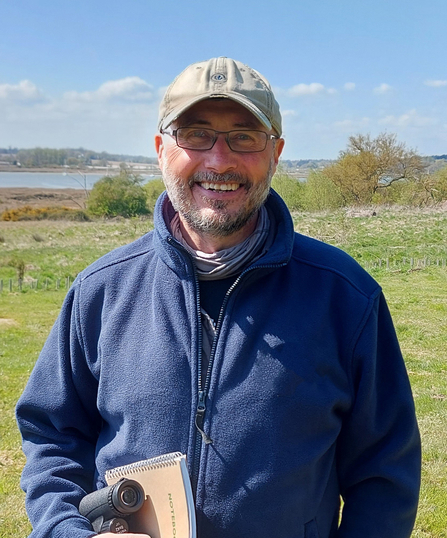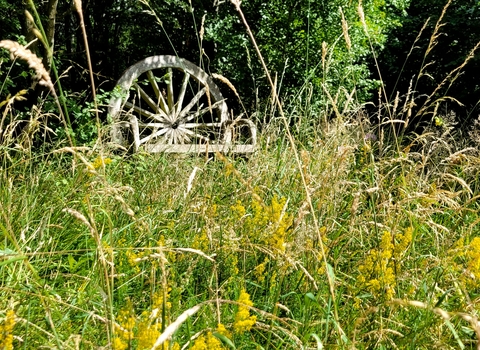Across Suffolk hundreds of private landowners are managing a network of land for wildlife. The habitats are diverse and include ponds, rivers, meadows, woodlands, wetlands, smallholdings and orchards. They cover many hundreds of acres of land and are helping to create a nature recovery network across Suffolk.
If you become a Private Nature Reserve owner and are a member of Suffolk Wildlife Trust, we can also provide ongoing support and advice which could further enhance the benefits to nature on your land. You will also have the opportunity to share your experiences and successes with others, provide support to other landowners or receive support from those already registered in our Private Nature Reserve network. Working together we can help build resilience for nature across the county.
We can provide a free initial visit and advice to any private nature reserves in Suffolk. However, for advice on large farms (greater than 5 hectares), private gardens and community sites, please click on the links below for help and advice from our Farming Wildlife Advice and Team Wilder pages.

Conservation Adviser Graham Hart looks after County Wildlife Sites and Private Nature Reserves for Suffolk Wildlife Trust. Graham has 20 years of conservation experience from a variety of voluntary roles with many different organisations. He specialises in bats, dormice and amphibians and holds a number of Natural England licences to work with protected species. Graham has always had a passion for working with landowners to improve their land for wildlife.
If you are interested in becoming a Private Nature Reserve you can request a free visit from a Conservation Adviser. Please email Suffolk Wildlife Trust or call us on 01473 890089 (Monday to Friday 8.30am - 5.30pm)
For those already in the Private Nature Reserve network or for anyone seeking some general advice without a visit, please click below to see the factsheets already available on our website.
Private Nature Reserve Case Studies
Read these case studies of Private Nature Reserve's the Trust has worked with, and learn about the incredible impact they have had on local wildlife.
Frances and Roland, Thorpe Morieux - 12 acres of mostly converted arable fields
January 2022
Why did you decide to manage your land for the benefit of wildlife?
Our dream had always been to have some land which we could manage for wildlife. When we were at a stage in our careers when we no longer had to commute into London on a regular basis, we started our search. Three years later, now 25 years ago, we found our present home which came with over nine acres – consisting then of eight acres of intensively cultivated arable land and about one acre of rough horse meadow. Later we acquired a neighbouring field which had been left to effectively rewild itself which brought our holding up to just under 12 acres.
What have you learnt so far?
An enormous amount - we set off with great enthusiasm and very little knowledge! Our first step was to plant a woodland. We planted over 1400 mixed, native deciduous trees over two areas. Our first learning experience was the importance of fencing – rabbit guards were not enough! Our next challenge was developing a wildflower meadow. Our first attempt was a failure – we had a fine field of red fescue grass but very few flowers. Our twin meadow learning experiences were finding out the importance of reducing the fertility of the soil and the key contribution of the amazing plant, the yellow rattle which is parasitic on grass. However, perhaps the major learning experience and great joy was finding that if you do provide the right habitats the wildlife does come.
Have there been any highlights?
There have been so many it is hard to choose. There was the amazement and delight of finding great crested newts just two years after digging a pond designed specifically for them. There was perhaps the even greater surprise of finding we had dormice and the joy this year of finding a nest with two adults and several babies. As we are surrounded by arable fields but not far from ancient woodlands, we learned the importance of hedges and connectivity. Seeing our first kingfisher one Christmas was pretty special too!
We had no common lizards on our land when we first came and have been a release site for those having to be moved from development sites. It has been a joy to see how well the population has thrived and we even had the privilege of seeing a lizard give birth.
A highlight and lowlight has been our turtle doves. They came back to us every year for over 20 years but in 2019 they did not return – a sad sign of the dramatic decline in these iconic birds. On a more positive note, we have been fascinated to see how well our wildflower meadow absorbs waters. Previously in heavy rain we would have a river of water coming off our fields, now very little.
Watching our woodland and wildflower meadow developing, monitoring the butterflies and more recently the moths, observing the increase and diversity of our birds, delighting in the hares – in fact almost every day brings some new learning, new highlight, new joy!
How has the Trust’s advice helped?
When we set off the Trust was much smaller and the range of advisers that exist now was not as available. However, in the early days we were greatly helped and motivated by both volunteer SWT advisers and groups who gave so freely of their time, knowledge and enthusiasm. We also greatly benefited from the setting up of the first PNR network and learned a lot from meeting people who were doing the same things as us. Subsequently, we received very helpful advice on our ponds and in the last eight years we have had the pleasure of working with Simone, Alison and the dormice monitoring team at the Trust.
Fiona, Sudbury – 1.5 acres of converted arable field and vegetable patch
Why did you decide to manage your land for the benefit of wildlife?
As an organic gardener I have always been fascinated by the interrelationship between flora and fauna. When a neighbour transformed an arable field into a wildlife haven with a mixed native hedge and mixture of wild grasses and flowers within, I too decided to turn most of my ¾ acre vegetable patch over to wildflowers and plant trees for coppicing.
Since then more neighbours have taken interest and asked about sourcing wildflowers and native tree species. Hopefully the changes will influence other people to grow for wildlife.
What have you learnt so far?
To discover that you can encourage insect species into your environment simply by sowing particular plants or by letting them grow, was a revelation. My attitude to nettles and thistles, changed and, combined with a desire to do less “tidying up”, led to a greater interest in managing land for wildlife. This led eventually to a decision to purchase some land to plant a small woodland with a pond.
Managing the land is therapeutic, inspirational and a way of giving something back. The excitement of allowing nature to create and flourish, to discover what has “flown in” and what was waiting in the soil is pure joy.
Have there been any highlights?
The wildflower meadow is full of spiders, moths, butterflies and other insects as well as small mammals. A weasel was also spotted this summer.
One of the “wow” moments was the flowering of thousands of poppies, the seed having waited in the soil for possibly 50 years, very appropriate for 2014. Another was swimming in the pond amongst mating damsel flies and feeling a large dragonfly settling on my head.
How has the Trust’s advice helped?
The Trust's advisory visit in October was invaluable and very timely, and I now have a clear picture how to progress the woodland, particularly the area to be coppiced.
Walking in Arguer Fen and Spouse’s Vale nature reserve inspired the mix of holly, silver birch, wild cherry and hazel with scattered oaks and field maples. I hope that the little woodland I have planted will be just like that in one hundred years time. Meanwhile it is providing a home to a myriad of species; knowing that gives me enormous pleasure.
I continue to follow the Trust’s campaigns and your magazine is full of information focused on positive initiatives regarding the future of our wildlife.
Andrew and Jane, Leiston - 32 acres of converted arable field
Why did you decide to manage your land for the benefit of wildlife?
We trained as biologists because we were always interested in the natural world. When we realised many species were in decline, we felt it important act straight away rather than depending on others to do something about it. With that in mind we increased the size of our land-holding each time we moved house.
What has been your approach?
Our efforts have been aimed at increasing biodiversity on our piece of land, by creating a mosaic of different habitats on what was mainly arable land. Initially our focus was on plants, as the foundation for everything else, but subsequently we have not concentrated on any one group. Anything that has appeared, we have tried to provide or extend suitable habitat for it.
Have there been any highlights?
We have 209 species of plant (not including grasses) supporting 58 species of birds, 28 of butterflies, 5 of reptiles and amphibians, 18 of mammals and at least 73 of moths, using our land for breeding and/or feeding, plus rarities on passage like wryneck and ring ouzel, clouded yellow and silver-washed fritillary.
How has the Trust’s advice helped?
We started 23 years ago when the Trust was smaller. Our background gave us the foundations to make significant inroads but the advisory visits focusing on specialist areas including bats, harvest mice and birds have been useful sources of information and good sounding boards. It is always helpful to know what other people are doing in similar circumstances and the private nature reserve network run by the Trust gives us this option.





